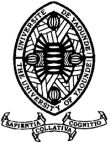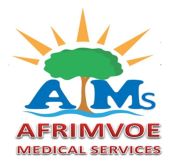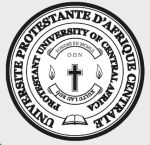Hydrocephalus of Newborns and Infants in the City of Douala : Management and Outcome
L’Hydrocéphalie du Nouveau-Né et du Nourrisson à Douala : Aspects Thérapeutiques et Évolutifs
DOI:
https://doi.org/10.5281/hra.v3i1.6297Keywords:
hydrocephalus, newborn, infantAbstract
RÉSUMÉ
Introduction. L’hydrocéphalie constitue un facteur important de mortalité et de morbidité pouvant compromettre gravement le pronostic vital ou fonctionnel du nouveau-né et du nourrisson en l’absence de prise en charge correcte et précoce. Le but de la présente étude est de décrire les aspects thérapeutiques et évolutifs de l’hydrocéphalie au service de pédiatrie de l’Hôpital Général de Douala. Matériels et méthode. Il s’agissait d’une étude transversale descriptive qui s’est déroulée dans le service de pédiatrie de l’Hôpital Général de Douala couvrant une période de 12 ans allant de janvier 2010 à janvier 2021. Résultats. Au total, la fréquence hospitalière de l’hydrocéphalie était de 0,18% (34 cas sur 18000). L’échantillon était composé à 26,47% de nouveau-nés et 73,52% de nourrissons. On notait une prédominance masculine avec un sex-ratio H/F de 1,125. Sur le plan clinique, les principaux signes étaient l’hypertension intra crânienne (88,23 %), un retard psychomoteur (17,64%) et un flou visuel (29 ,41%). L’hydrocéphalie était surtout d’origine malformative (38,23%) et infectieuse (14,70%). La dérivation ventriculo-péritonéale a été effectuée chez tous les patients. En post-opératoire, le dysfonctionnement de la valve (17,64%) et l’infection post opératoire (2,94%) étaient les principales complications. Il y a eu 36,52% de décès chez les enfants âgés de 4 ans à 7 ans. À long terme, les principales complications étaient la macrocrânie (64,4%), des troubles visuels (38,23%) et des troubles du langage (41,17%). Le retard psychomoteur affectait la vie scolaire de façon importante (38,23%). Conclusion. L'hydrocéphalie du nouveau-né et du nourrisson affecte gravement le quotient intellectuel de bon nombre de ces enfants et leur pronostic fonctionnel, constituant par conséquent un obstacle à leur insertion socio familiale.
ABSTRACT
Introduction. Hydrocephalus is a major cause of mortality and morbidity, which can seriously compromise the vital or functional prognosis of newborns and infants if not managed correctly and early. The aim of the present study is to describe the therapeutic and evolutionary aspects of hydrocephalus in the pediatric department of the Douala General Hospital. Materials and methods. This was a descriptive cross-sectional study that took place in the pediatrics department of the Douala General Hospital covering a 12-year period from January 2010 to January 2021. Results. Overall, the hospital frequency of hydrocephalus was 0.18% (34 cases out of 18,000). The sample comprised 26.47% newborns and 73.52% infants. Male predominance was noted, with a M/F sex ratio of 1.125. Clinically, the main signs were intracranial hypertension (88.23%), psychomotor retardation (17.64%) and visual blur (29.41%). Hydrocephalus was predominantly malformative (38.23%) and infectious (14.70%). Ventriculoperitoneal shunting was performed in all patients. Post-operatively, valve dysfunction (17.64%) and post-operative infection (2.94%) were the main complications. 36.52% of deaths occurred in children aged 4 to 7 years. In the long term, the main complications were macrocrania (64.4%), visual disturbances (38.23%) and language disorders (41.17%). Psychomotor retardation significantly affected school life (38.23%). Conclusion. Newborn and infant hydrocephalus severely affects the IQ of many of these children and their functional prognosis, thus constituting an obstacle to their social and family integration.
References
Sylla H. Aspects épidémiologiques et cliniques de l’hydrocéphalie congénitale au CHU Gabriel Touré de Bamako. Thèse en médecine, Université des Sciences, des Techniques et des Technologies de Bamako. 2020
Mouafo FF, Djientchen V, Chiabi A, Mbarnjuk SA, Walburga YJ et al. Our experience in management of infantile hydrocephalus: A study on thirty-five regrouped cases in Yaoundé, Cameroun. Afr J Pediatric Surg 2011; 8 (2) : 199-202.
Djientcheu VdP, Nguefack S, Mouafo TO, Mbarnjuk SA, Yamgoue TY, Bello F et al. Hydrocephalus in toddlers: the place of shunts in sub-Sahara African countries. Childs Nerv Syst 2011; 27 : 2097–2100.
Bello F, Oumarou H, Nchufor RN, Gaby NA, Douanla GA, Djientcheu VDP. Pronostic à Long Terme et Qualité de vie des Enfants Opérés pour Hydrocéphalie Congénitale à Yaoundé. Health Sci. Dis 2022; 23 (10) :1-4.
Kamla et al. Épidémiologie des malformations congénitales visibles à la naissance à Yaoundé. Health Sci. Dis. 2017;18 (4): 53-62.
Mfouapon E, Djoubairou B, Nassourou OH, Figuim B, Ndome T, Bikono E et al. Endoscopic Third Ventriculostomy at Laquintinie Hospital (Douala) : A Report of 23 Cases.Health Sci. Dis 2023. 24 (11) : 75-78.
Tamara DS Kathryn BW, Jay Rivacambrin, John RWK, Margaret et al. Association of intraventricular hemorrhage secondary to prematurity with cerebrospinal fluid shunt surgery in the first year followng initial shunt placement. J Neurosurgery pediatrics 2012; 9 (1):54-63
Kulkarni, Abhaya V et al. An instrument to measure the health status in children with hydrocephalus: the hydrocephalus Outcome Questionnaire. Journal Of Neurosurgery. 2004; 101 (2): 134-40.
Warf BC. Pediatric hydrocephalus in East Africa: prevalence, causes, treatments, and strategies for the future. World Neurosurg.2010 ;73(4):296–300.
Sérgio Salvador F, Jo’o Carlos Henriques, Missael Munguambe, Rui Vaz MC, Henrique Barros P. Hydrocephalus in children less than 1 year of age in northern Mozambique. Surg Neurol Int. 2014 ; 8(5):175.
Sidi Salem-Memou et al. Hydrocéphalie du nouveau-né et du nourrisson au Centre Hospitalier National de Nouakchott. Pan African Medical Journal. 2020;36(184). 10.11604/pamj.2020.36.184.18750
Tapsoba TL, Sanon H, Soubeiga KJ, Ouattara TF, Kabré A, Cissé R. Aspects épidémiologiques, cliniques et tomodensitométriques des hydrocéphalies chez les enfants de zéro à 15 ans (à propos de 53 patients colligés au centre hospitalier universitaire Yalgado Ouédraogo de Ouagadougou: CHU YO). Médecine Nucl. 2010; 34:3-7.
Ahmed RR , Medhat AM, Hamdy GM , Effat LKE , Abdel-Hamid MS , Abdel-Salam GMH. X-Linked Hydrocephalus with New L1CAM Pathogenic Variants: Review of the Most Prevalent Molecular and Phenotypic Features. Molecular Syndromology. 2023, 14(4):283-292.
Ashraf Ahmed, GursevSandlas, Paras Kothari, DineshSarda, Abhaya Gupta, ParagKarkera, and Prashant Joshi. Outcomeanalysis of shunt surgery in hydrocephalus. J IndianAssocPediatrSurg. 2009 Jul-Sep; 14(3): 98–101
Bello figuim, Oumarou Haman N, Nchufor Roland N, Gaby Ndzie AD, Douanla GA, Djientcheu Vincent De Paul. Pronostic à long terme et qualité de vie des enfants opérés pour hydrocéphalie congénitale à yaoundé : Health Sci. Dis :Vol 23(10) October 2022 pp 1-4
Salem-Memou S, Thiam AB, Kpelao E, et al. Traitement de l’hydrocéphalie de l’enfant par ventriculocisternostomie endoscopique au Sénégal. Neurochirurgie 2014 ; 60 : 254–257.
Kulkarni AV. Quality of life in childhood hydrocephalus: a review. Childs Nerv Syst 2010 ; 26 : 737–743.
Barry A, Bangoura MA, Camara SH, Diop MM, Cherif MS, Kouyate M et al. Profil Sociodémographique et Clinique des Patients Suivis pour Hydrocéphalie Congénitale à l’Hôpital de l’Amitié Sino Guinéenne: Health Sci Dis. 2021, 22(9) : 39-42
Hèdirè Y. Malformations congénitales reconnaissables à la naissance chez les nouveau-nés dans le département de pédiatrie du centre hospitalier universitaire Souro sanou. PhD Thesis, Université d’Ouagadougou, 1983.
Tabarki B, Othmani K, Yacoub M, et al. Hydrocéphalies de l’enfant : Aspects étiologiques et évolutifs : A propos de 86 observations. Rev Maghrébine Pédiatrie 2001; 11 : 65–70.
Downloads
Published
How to Cite
Issue
Section
License
Copyright (c) 2024 Moumi Mireille G, Oumarou Haman N, Nzedzou Marguerite G, Bello Figuim, Fondop Joseph, Djientcheu Vincent De Paul

This work is licensed under a Creative Commons Attribution-NonCommercial-NoDerivatives 4.0 International License.
Authors who publish with this journal agree to the following terms:
- Authors retain copyright and grant the journal right of first publication with the work simultaneously licensed under a Creative Commons Attribution License CC BY-NC-ND 4.0 that allows others to share the work with an acknowledgement of the work's authorship and initial publication in this journal.
- Authors are able to enter into separate, additional contractual arrangements for the non-exclusive distribution of the journal's published version of the work (e.g., post it to an institutional repository or publish it in a book), with an acknowledgement of its initial publication in this journal.
- Authors are permitted and encouraged to post their work online (e.g., in institutional repositories or on their website) prior to and during the submission process, as it can lead to productive exchanges, as well as earlier and greater citation of published work










